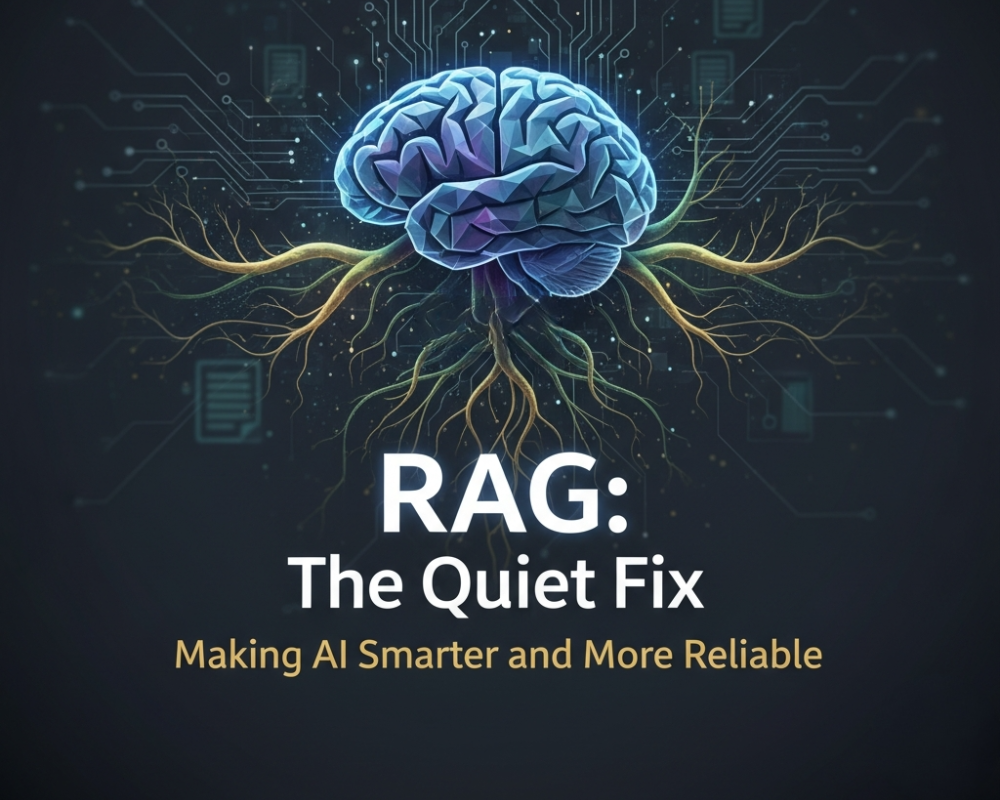November 3, 2025 By: JK Tech
There’s no doubt that Generative AI has been a game-changer, helping businesses unlock new possibilities every day. But when it comes to delivering precise, real-time, and context-aware insights, even powerful models can hit a roadblock. That’s where Retrieval-Augmented Generation, or RAG, comes in. It ensures AI stays accurate, current, and grounded in the right information.
Why RAG Matters
RAG is a way of giving AI access to fresh, relevant knowledge instead of depending only on what it learned during training. It works by pulling the most relevant documents or data from a company’s internal library, website, or knowledge base just before the model generates a response.
For example, if you ask the AI assistant about the firm’s latest HR policy, it won’t guess. Instead, it retrieves the actual policy document, reads the relevant section, and then crafts an answer that reflects the organization’s rules. This small adjustment drastically improves accuracy and makes AI feel more useful in real-world business settings.
In short, RAG helps AI become less of a “know-it-all” and more of a well-informed partner.
How It Works
The RAG process happens in three clear steps:
1. Retrieve: The system searches your database for the most relevant files or text.
2. Augment: It adds the retrieved content to the question you asked.
3. Generate: The AI then creates an answer, now guided by the retrieved information.
This process turns general-purpose AI into a domain expert without retraining the entire model. You’re not rebuilding the intelligence; you’re feeding it context right when it’s needed.
Why Businesses Are Paying Attention
Companies using RAG based systems are seeing practical benefits:
-
Accuracy: Fewer hallucinations and more fact-based answers.
-
Relevance: AI responses align better with company knowledge and tone.
-
Efficiency: It avoids the cost and complexity of building new, task specific models from scratch.
Of course, RAG also has its own challenges. It depends on having well organized, trustworthy internal data. If the content is outdated or inconsistent, the AI will reflect that too. And data privacy must be carefully managed, especially when company documents are being retrieved in real time.
What’s Next for RAG
The next wave of development is already underway, researchers are exploring Agentic RAG, where retrieval, generation, and reasoning merge, enabling AI to plan, act, and verify its own answers. Others are testing real-time retrieval, where models can pull from live data streams like news, analytics, or social feeds instead of static text.
Industries like healthcare, law, and finance are also experimenting with specialized RAG systems designed to handle technical language, regulatory rules, and domain-specific data safely. The goal is simple: make AI that doesn’t just speak fluently but speaks accurately.
The Takeaway
RAG isn’t a flashy headline or a distant innovation; it’s a practical fix that’s reshaping how AI works today. It closes the gap between general intelligence and domain expertise, between confidence and correctness.
For organizations investing in AI, the message is clear: don’t just build bigger models; build smarter ones. The future of AI isn’t about knowing everything, it’s about knowing what’s relevant, right now.


